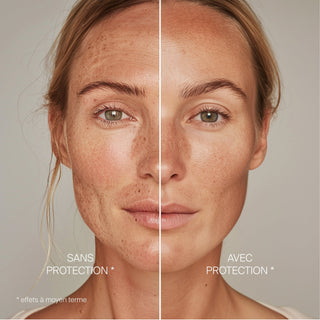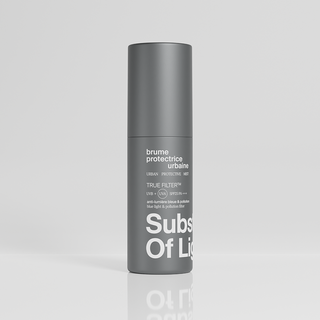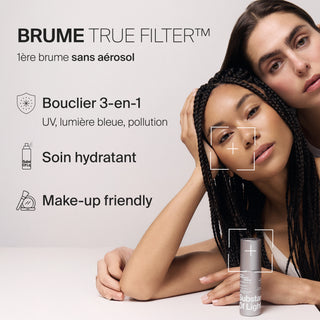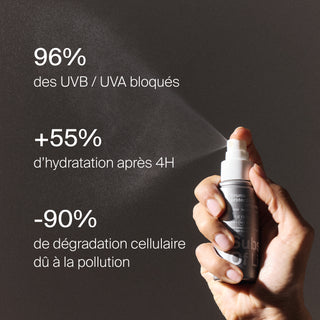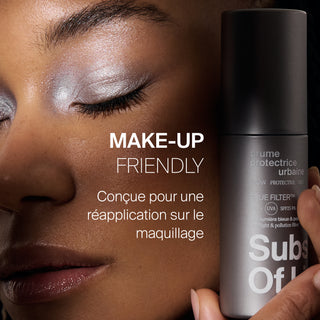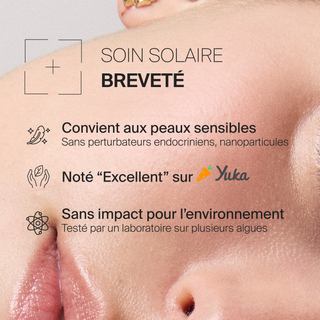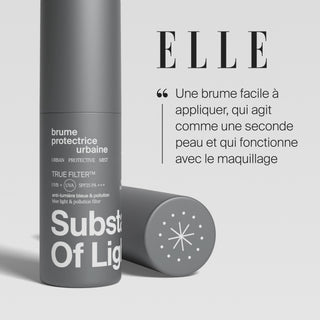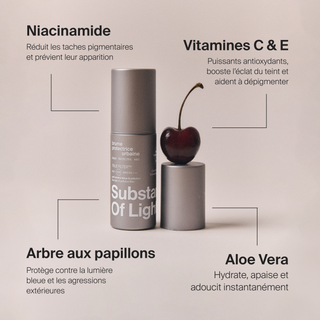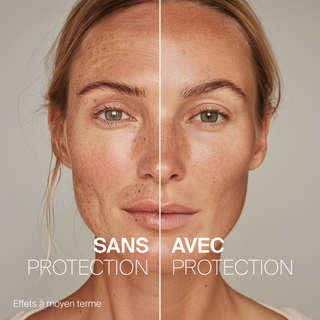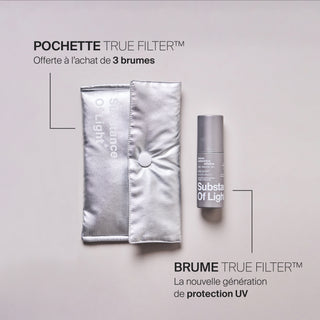Introduction
Have you ever tried to understand the distinctions between SPF 30 and SPF 50 sunscreen ? What is the relevance of broad spectrum and how are SPF tests carried out? Can you really trust them? Ultraviolet (UV) rays and sun-induced damage play a significant role in various skin health issues, such as skin cancer, premature aging, and hyperpigmentation . UV rays encompass UVA, UVB and HEV, each of which has distinct implications for skin health. It is crucial to use sun protection that effectively defends against these different types of UV radiation.
We'll look at SPF testing, how SPF values are calculated, the limitations of these SPF ratings, and what you need to know to choose a sunscreen that provides overall protection against UVA and UVB rays.
Understanding SPF Ratings
SPF: Sun Protection Factor
The SPF (Sun Protection Factor), created in 1974 by Dr. Franz Greiter, measures the ability of a sunscreen to protect the skin against sunburn caused by UVB rays. A practical mnemonic reminds us that UV B causes burns .
How SPF is Measured:
SPF tests can be performed either in vivo (on human participants) or in vitro (in the laboratory). In general, in vivo SPF testing (per ISO 24444) is preferred because laboratory environments have difficulty replicating human variables such as skin texture and absorption, which impact test results . In practice, approximately 2 mg per square centimeter of sunscreen is applied to the skin of study participants. Then the skin area is exposed to UV rays. The SPF value indicates the time it takes for the skin patch to develop erythema (redness), whether with or without the application of sunscreen. For example, if your skin burns in 10 minutes without sunscreen but takes 5 hours (300 minutes) to burn with sunscreen, then sunscreen allows you to be exposed to UV rays 30 times longer and has an SPF value of 30.
- SPF15: Filters approximately 93% of UVB rays.
- SPF30: Filters approximately 97% of UVB rays.
- SPF50: Filters approximately 98% of UVB rays.
However, no sunscreen blocks UVB 100%, hence the importance of regular reapplication. Furthermore, the effects of UVA are not immediately visible and cannot be measured by SPF tests. SPF values are not useful when looking for UVA protection, which is why it is important to look for broad-spectrum sunscreens.
The Concept of “Broad Spectrum”
Protection Against UVA and UVB
The “Broad Spectrum” indication means that the sunscreen offers protection against both types of ultraviolet rays: UVA and UVB. UVA contributes to skin aging , while UVB causes sunburn (solar erythema) and is associated with skin cancer . A practical mnemonic reminds us that UV A is a factor of Age . The Broad Spectrum claim is important to consider when choosing a sunscreen because UVA rays make up 95% of solar radiation and cause photodamage that can lead to aging and skin cancer . Be sure to choose a broad-spectrum sunscreen for complete protection.
The PA+++ Classification
UVA Protection
In addition to in vivo SPF testing performed to determine UVB protection, additional UVA testing should be done based on persistent pigmentation also called Persistent Pigment Darkening (PPD). Unlike SPF for which we measure the minimum erythematous dose, here we measure the UVA dose necessary to cause persistent pigmentation, that is to say pigmentation due to the oxidation of melanin, which persists 2 hours after the end from UVA exposure (which is very different from tanning ).
The extent of UVA protection varies from country to country. European regulations require that anti-UVA protection (PPD) be at least 1/3 of the SPF indicated on the labeling and must cover the longest UVA rays, which corresponds to a minimum critical wavelength of 370 nm to be able to have broad spectrum certification. The PA+++ classification is used in Asia to assess UVA protection. The more "+" in the rating, the higher the UVA protection. UVA contributes to premature aging of the skin.
- PA+: Low protection (PPD 2 to 4)
- PA++ : Medium Protection (PPD from 4 to 8)
- PA+++: High protection (PPD from 8 to 16)
- PA++++ : High protection (PPD>16)
Conclusion
Choosing the right sunscreen is essential to protect your skin from the harmful effects of the sun, especially in urban environments. It's important to understand that even SPF25 provides protection against 96% of UVA and UVB rays, and SPF50 only adds 1-2% more protection. For effective protection throughout the day, it is essential to reapply regularly, and an SPF25 is ideal because its texture encourages reapplication for optimal results . Most importantly, consider the PA+++ rating for comprehensive UVA defense and ultra-broad spectrum protection against visible blue light and urban pollution .
TRUE FILTER™ Urban Protective Mist: a small gesture for big protection
Complete ultra-broad spectrum UVB/UVA protection
TRUE FILTER™ provides patented ultra-broad spectrum protection against UVA, UVB, and blue light (HEV), exceeding that of conventional sunscreens. With SPF25, this mist filters 96% of UVB rays, emphasizing the most influential part of the light spectrum in the photoaging : UVA.
Reduction of oxidative stress and PA+++ classification
Displaying a PA+++, TRUE FILTER™ prioritizes deep protection against photoaging, the main cause of 80% of skin aging. This haze offers comprehensive defense rather than targeting specific symptoms.
Advanced Protection against Blue Light (HEV) and Pollution
TRUE FILTER™'s protection extends to blue light damage (HEV) and air pollution , a major contributor to skin aging. This breadth of protection is second to none, surpassing photoprotective products widely considered "broad spectrum" or PA rated.
Explore the urban protective mist TRUE FILTER™ from Substance Of Light ® , a real breakthrough in daily skin protection.
Bibliography
- A. Green, et al. “Sunscreen and prevention of skin aging: a randomized trial” Ann Intern Med. 2013 Jun 4;158(11):781-90. https://pubmed.ncbi.nlm.nih.gov/23732711/
- MR lannacone, MCB Hugues, AC Green “Effects of sunscreen on skin cancer and photoaging” Photodermatol Photoimmunol Photomed. 2014 Apr-Jun;30(2-3):55-61. https://pubmed.ncbi.nlm.nih.gov/24417448/


